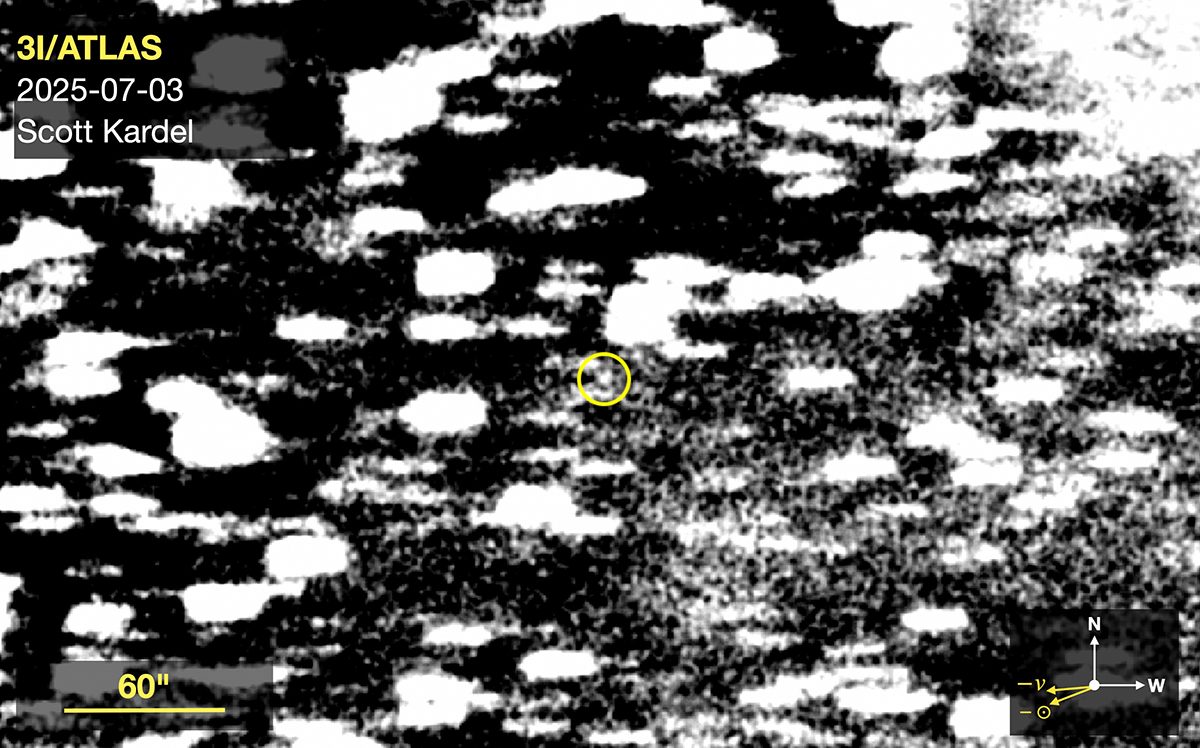A community of smart telescope users have captured images of the interstellar comet that has entered our Solar System from deep space.
The NASA-funded ATLAS (Asteroid Terrestrial-impact Last Alert System) survey telescope in Rio Hurtado, Chile, reported sightings of the comet on 1 July 2025.
This interstellar body is known as 3I/ATLAS or C/2025 N1, and entered our Solar System from elsewhere in the Galaxy.
It can currently be seen in the constellation Sagittarius.
Endeavour to track the interstellar visitor
The eyes of the comet-chasing world are upon this interstellar visitor, which is expected to be best seen in the Northern Hemisphere under the dark skies of winter 2025.
A community of amateur astronomers using Unistellar smart telescopes have been observing comet C/2025 N1 (ATLAS) – also designated 3I/ATLAS – and have managed to captured images of the comet.
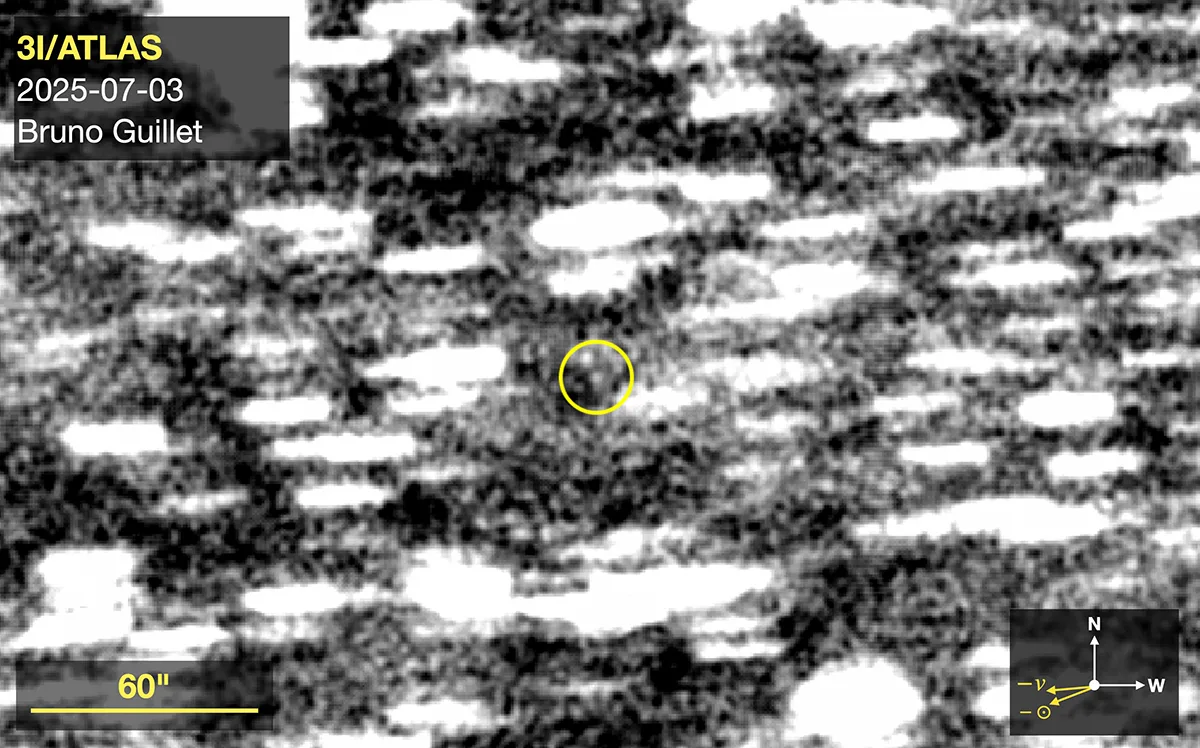
Unistellar is a manufacturer of ‘smart telescopes’, a new type of telescope that enables users to select a celestial object from a catalogue, and the telescope then points automatically at it.
Smart telescopes don’t have an eyepiece like a traditional telescope, but instead capture multiple images of an object like a galaxy, nebula, star cluster or comet, stacking the images in real time to produce a clear view.
Smart telescopes often have their own Wi-Fi connection, meaning they can be controlled via smartphones and tablets.
What’s more, companies like Unistellar encourage users to participate in group citizen science projects, gathering images and data on a specific target.
Such as, in this case, an interstellar comet travelling through our Solar System.
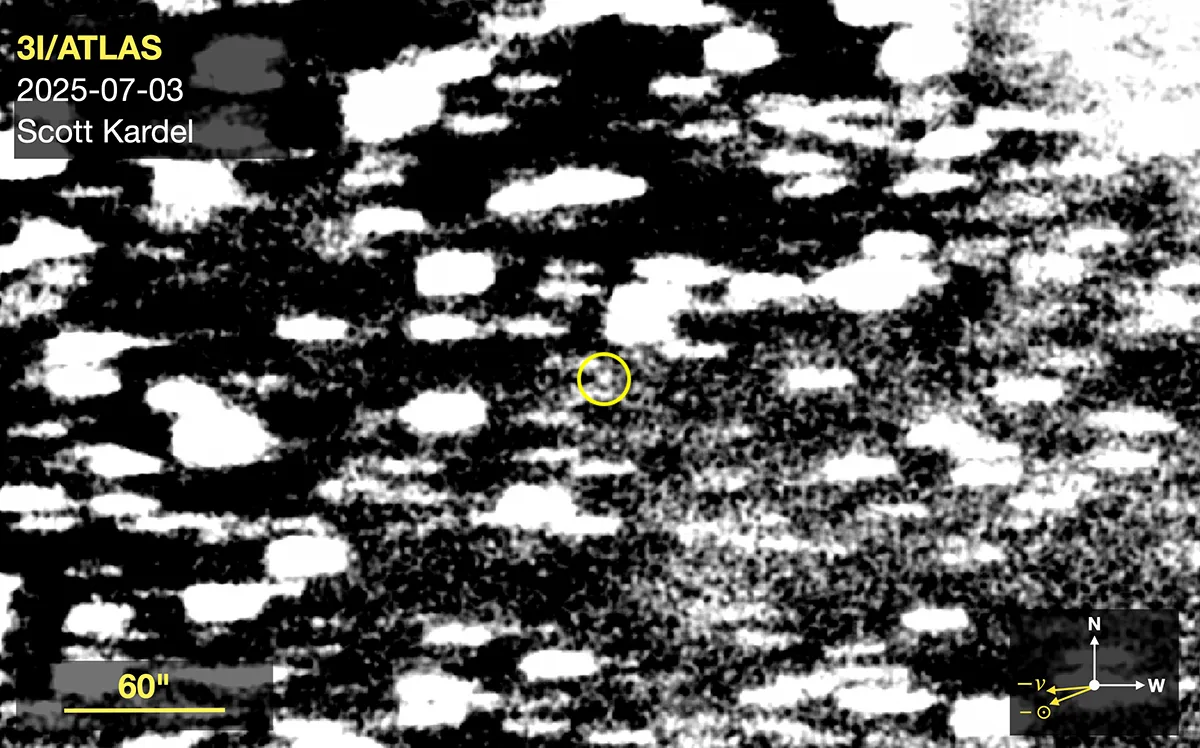
“This could mark the third discovery of an interstellar object in history,” says Franck Marchis, Senior Astronomer at the SETI Institute and Chief Science Officer at Unistellar.
“Right now, its brightness ranges between magnitude +17 and +19, and it may show some recent cometary activity that could increase quickly.
“This time we’ve caught it early enough to coordinate observation campaigns with our Unistellar citizen science network and other citizen science telescopes to be able to capture images of it.
“Combining these observations, which allow us to track its trajectory, with those taken soon by major ground-based and space-based observatories could be a unique chance to study its composition and behaviour as it warms up while approaching the Sun.”
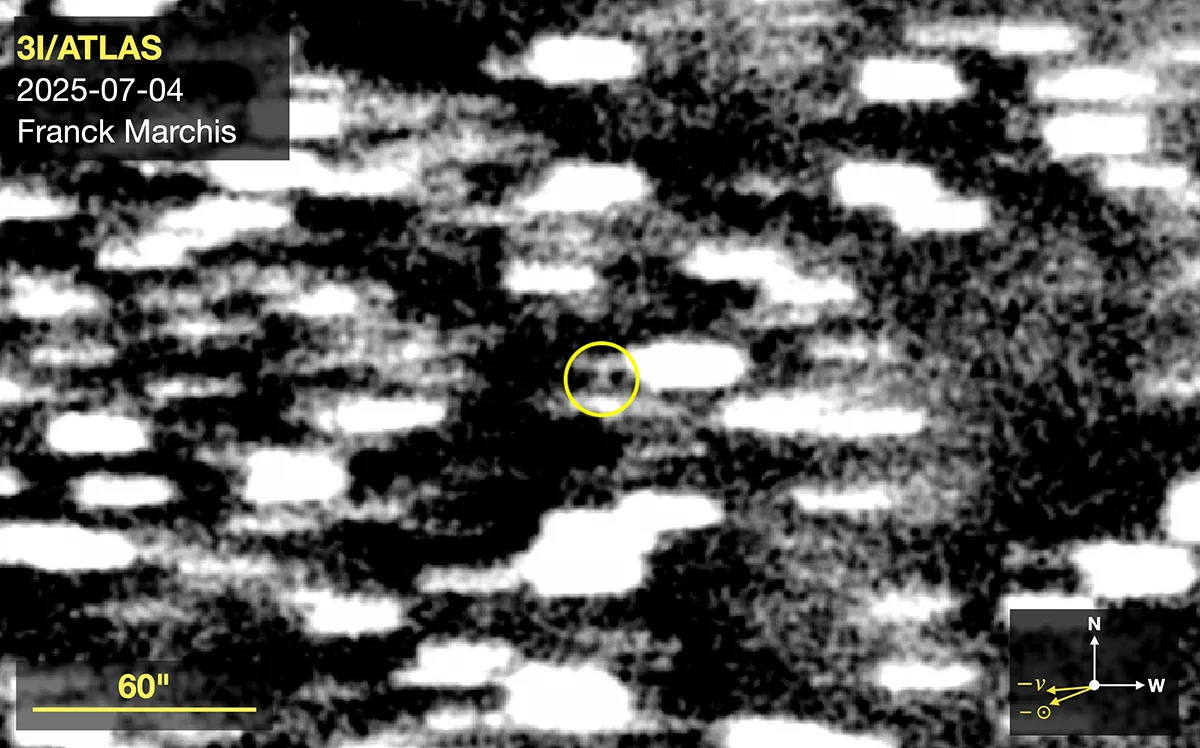
What we know about the comet
Initially classified as an asteroid, scientists say that it’s now clear 3I/ATLAS is displaying activity characteristic of an ‘active comet’.
That means it will likely heat up as it approaches the Sun, causing frozen gases sublimating into vapour, potentially forming a visible coma and tail.
It can be seen in the constellation Sagittarius and its nucleus is estimated to be between 1 and 2 km in size.
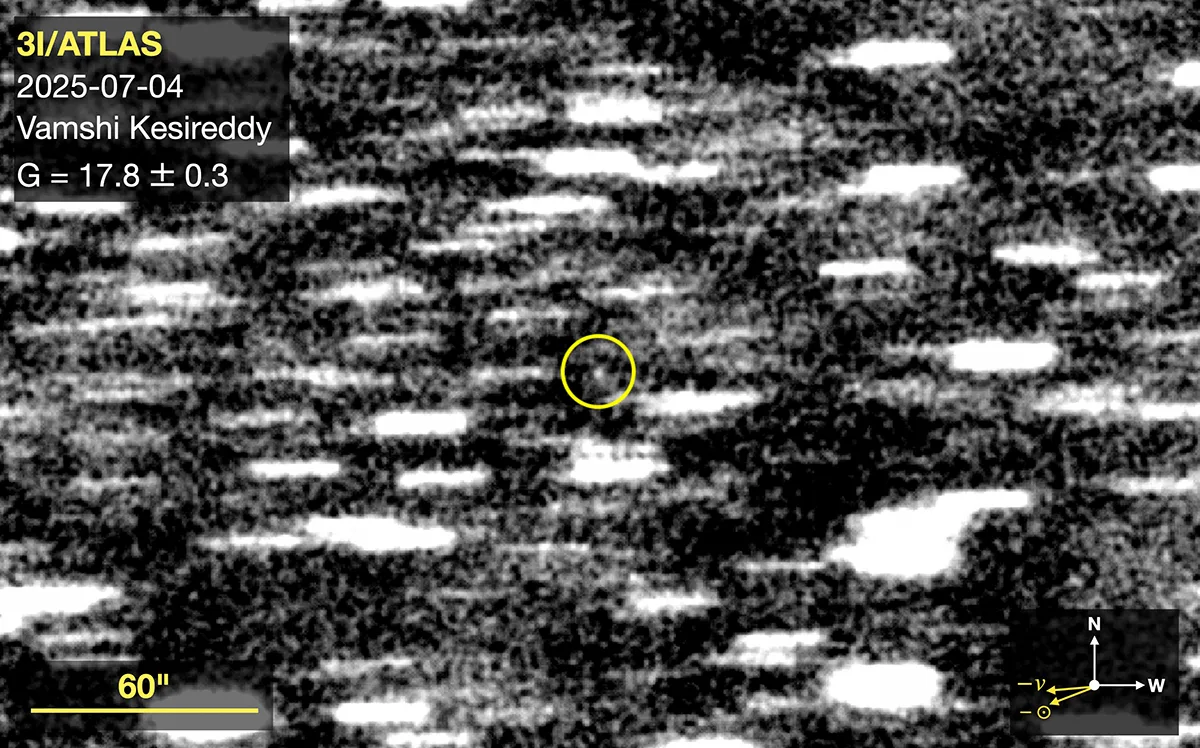
The comet itself is thought to be as big as to 20 kilometres wide and travelling about 60 km/s relative to the Sun.
It won’t end up in orbit around our Sun, like most of the comets that we see in the night sky, but instead will eventually reach the edge of our Solar System and exit it forever.
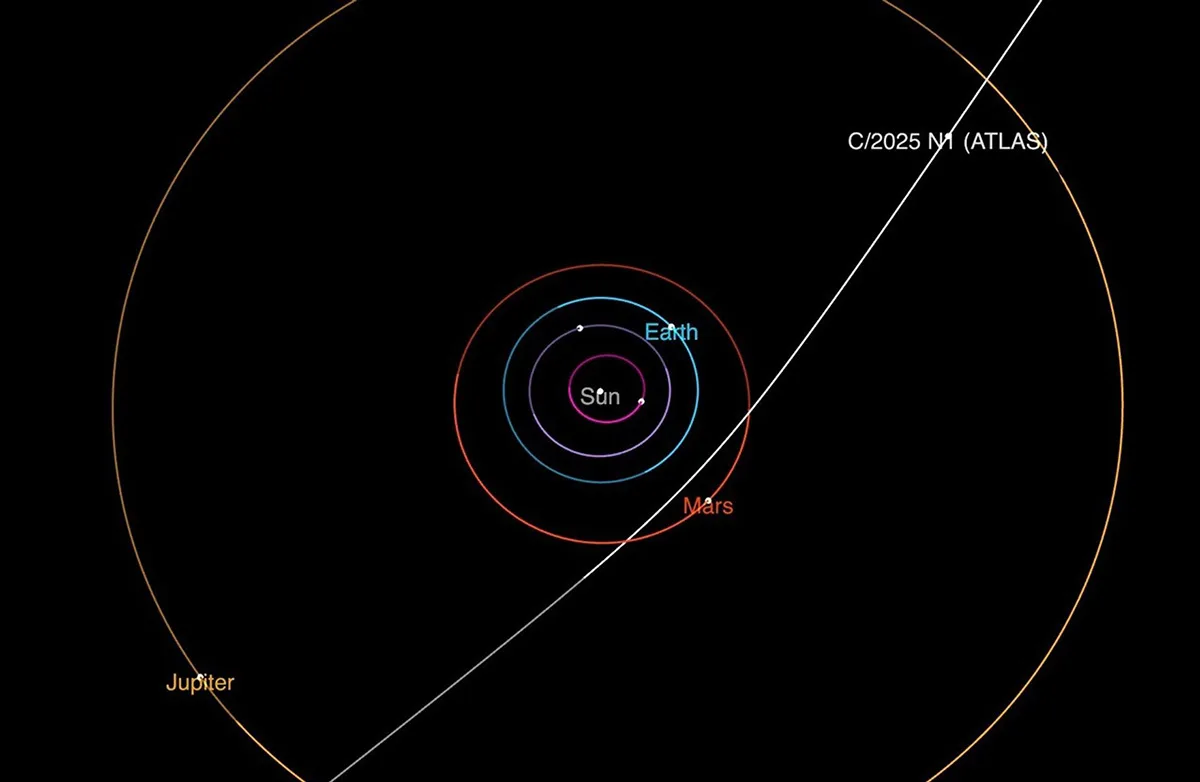
Before that, in October 2025 the comet will pass inside the orbit of Mars, but will be too close to the Sun to be seen from Earth.
From mid-November 2025 it could reappear in the morning sky in the constellation Virgo, shining around magnitude +10.5, which would put it within the reach of amateur telescopes.
If you’ve observed or photographed comet 3I/ATLAS, get in touch by emailing contactus@skyatnightmagazine.com
